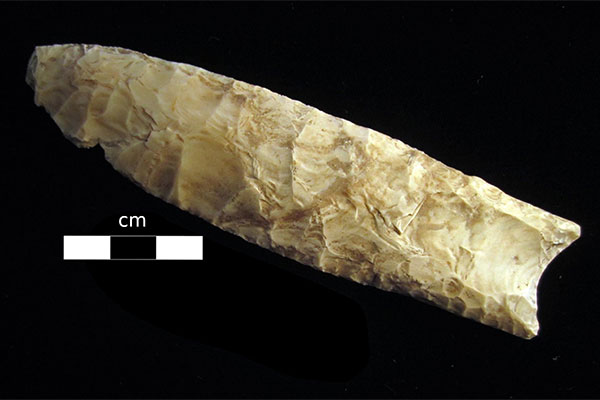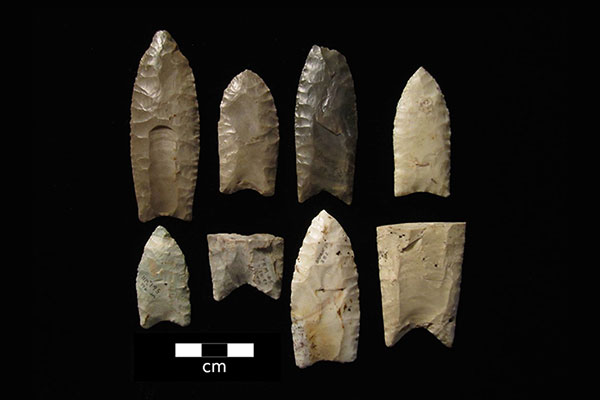Earliest Illinoisans
The earliest evidence of humans in what is now Illinois dates to around 13,000 years ago – the very end of the last Ice Age. The archaeological footprint of these earliest people (often referred to as “paleoindians”) is difficult to study, as they tended to live in small groups that moved rapidly and purposefully across a landscape that they shared with animals such as mastodon, stag moose, musk ox, and caribou. Few sites dating to this time have been professionally investigated, and archaeologists must rely on the often beautifully crafted stone points from this time to tell the story of how these societies colonized this region, organized themselves, interacted with one another, and adapted as their environments became more like those of today. Archaeological evidence shows that these early hunting-gathering peoples responded to rapid environmental change with dramatic shifts in how they used the physical landscape as well as how they created and maintained their social landscapes, abandoning or moving into new areas, developing new technologies, and over time potentially modifying entire ecosystems. Study of these earliest peoples often involves the cooperation of numerous professionals, avocational archaeologists, and interested members of the public as well as collaboration with ecologists and earth scientists.
The early peoples of Illinois were at the foundation of the complex changes that unfolded among the pre-Columbian societies of this region over the course of the next 13 millennia. A better understanding of these early hunter-gatherers is critical for telling the full human story of Illinois’ past as well as understanding the range of adaptive strategies that human groups use to respond to climate change.

Clovis point from DuPage county, Illinois

Group of Clovis Points from Central Illinois documented in a private collection